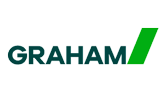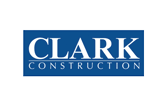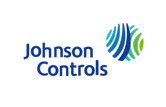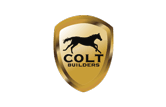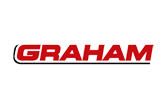Stretch 'n' Flex

According to OSHA, we should all be stretching 10 minutes a day to prevent injury and reduce fatigue. They suggest stretching during the onsite safety meeting. Unfortunately, OSHA’s Stretch and Flex poster leaves something to be desired — namely, actual construction professionals wearing actual PPE and having to do these stretches in unusual environments. That’s why I’ve put together a better, more realistic stretch ‘n’ flex guide. It draws on my experience in the field as well as my training as a yoga instructor. Enjoy!
Download the Stretch ‘n’ Flex poster!
Cactus Arms
Why: This chest opener stretches the entire upper body — the muscles between the chest and the shoulders as well as the area between the shoulder blades.

- Raise your arms to shoulder height, bending your elbows at 90-degree angles and facing palms forward. Reach your elbows behind you, like you’re trying to pinch a pencil between your shoulder blades. (You’ll look like a cactus, hence the name.) Inhale.
- Keeping your arms raised, lower your chin to your chest and bring your forearms together in front of you as you exhale.
- Return your arms to their original position as you inhale.
- Repeat 5 times
Avoid: Dropping your head back (looking up) on the inhale as this may strain your neck.
Side Stretches
Why: Stretching the sides of your body is the key to avoiding and relieving lower-back pain.

- Stand with feet shoulder-length apart. Lift your left arm straight above you, keeping your right arm relaxed.
- Bend at your waist towards your right, reaching up and to the right with your left arm as far as is comfortable.
- Hold the position as you inhale and exhale for three deep breaths.
- Return to a neutral stance.
- Switch sides, reaching up with your left arm and bending towards your right side.
- Repeat three times, switching sides each time.
Avoid: Dumping all of your weight into one side of your body. Press your feet evenly into the floor to keep your weight evenly distributed.
Top Archer Arm
Why: This stretches the latissimus dorsi which rarely get much love, leaving you prone to rotator cuff injuries.

- With your feet shoulder-length apart, reach your left arm up. Bend your left elbow and reach your left hand toward your upper-back.
- Reach your right arm up and place your right hand on your left elbow. Very gently push your left arm down to reach father down your back.
- Bend at your waist to the right, stretching your left side.
- Hold for ten deep breaths.
- Switch sides, reaching your right arm up and gently pushing it down with your left hand as you bend towards your left side.
Avoid: Dropping your chin to your chest. Instead, move your head back towards your forearm.
Shoulder Opener with Wall Assist
Why: This opens the muscles between the chest and shoulders which get tight from hunching over handheld devices (i.e., phones and tablets).

- Stand facing a wall.
- Extend your left arm out and to the side, palm flat against the wall.
- Slowly walk your feet back a few inches, pivoting at your shoulder, until you start to feel a stretch in your upper chest and shoulder.
- Hold for ten deep breaths.
- Switch sides and repeat.
Avoid: Having your arms either above or below horizontal.
Twists against the Wall
Why: This increases the range of motion for the spine and helps improve digestion.

- Stand with your side to the wall, leaving a six-inch gap between you and the wall.
- Firmly plant your feet.
- Twist your upper body forward and to the side, towards the wall.
- Place both your palms on the wall, using arm strength to gently twist more deeply.
- Hold for five deep breaths, standing taller as you inhale and twisting more deeply as you exhale.
Avoid: Twisting from your hips — keep them aligned with your feet.
Puppy on Wall
Why: This opens the chest and reverses effects of hunching over handheld devices.

- Place your palms on the wall at shoulder height, fingers pointing up.
- Keeping your hands on the wall, walk a few steps backwards. Drop your chest.
- Keep feet firmly planted and allow your chest and upper back to open.
- Hold for four deep breaths.
Avoid: Holding your breath!
Standing Quad Stretch
Why: This stretches the quads and hip flexors for better range-of-motion.

- Shift your weight into your right foot as you place your right hand on a wall to steady yourself.
- Bend your left leg and grab your left foot with your left hand.
- Hug your left foot in towards your butt while pressing your hips forward.
- Hold for six deep breaths.
Avoid: Dropping your chest or hinging forward at your hips.
Forward Fold
Why: This releases tension from the lower back and stretches the hamstrings which, when tight, can result in back and hip pain.

- With a slight bend in your knees, reach your arms towards the floor.
- Deepen the bend by further bending at the knees until your stomach touches your thighs.
- Hold your opposite elbows with your hands.
- Shift your weight into the balls of your feet.
- Hold for ten deep breaths.
Avoid: Rounding your lower back or keeping your weight in your heels.
Viparita Karani
Why: This reverses the effects of gravity, increases blood flow, and relieves leg cramps and fatigue.

Do this stretch at home after you’ve left work.
- Sit next to a wall so your hip is touching the wall.
- Rotate your hips so that your legs extend up the wall with your back flat on the floor.
- Extend your arms out to form a ‘T’ with your upper body. Relax them so they are lying on the floor.
- If you have tight hamstrings, inch your hips away from the wall and bend your knees to relieve pressure.
- Relax in this position for 10-15 minutes.
Avoid: Doing or thinking. Instead, allow your body to relax as you slow down, unwind, and breathe.

 Colleen Cahill •
Colleen Cahill • 


